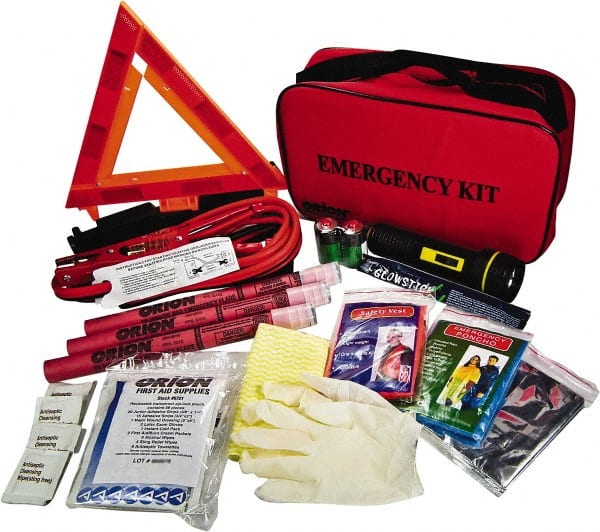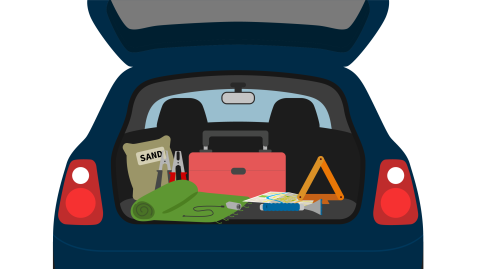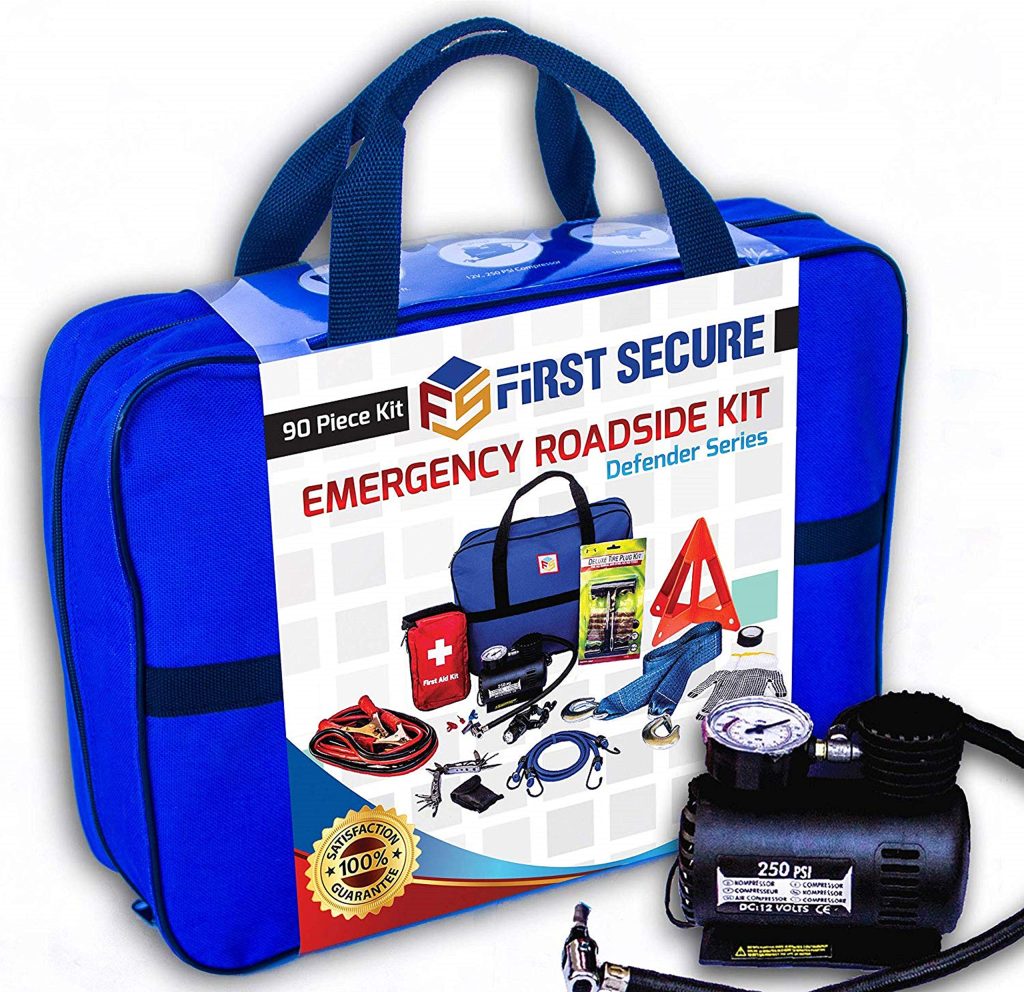Safety and emergency supplies are essential for preparedness during unforeseen events. These kits can mean the difference between life and death in emergencies.
Ensuring you have the right safety and emergency supplies can provide peace of mind and can be crucial in a crisis. From weather disasters to unexpected accidents, being prepared with a well-stocked emergency kit is a proactive step towards safety.
Essential items typically include first aid materials, water, non-perishable food, flashlights, and batteries. Tailoring your kit to your specific needs, environment, and the types of disasters most likely to occur in your area enhances your readiness. By maintaining and regularly updating your emergency supplies, you ensure that you are prepared to handle various emergency situations effectively. Remember, your emergency kit is your first line of defense—make it count.
Introduction To Crisis Preparedness
Crisis preparedness is essential for every individual and family. It means being ready for unexpected events. Natural disasters, power outages, and other emergencies can happen anytime. Being prepared can reduce panic and provide crucial support. Let’s explore how to stay safe.
The Importance Of Being Prepared
Being prepared saves lives and helps to keep calm. It means having a plan and the right supplies. Think of it as a safety net. It’s there to catch you when the unexpected happens.
Types Of Emergencies To Anticipate
- Natural disasters: floods, earthquakes, and hurricanes
- Home emergencies: fires, gas leaks, and water damage
- Health crises: pandemics and personal injuries
- Power failures: blackouts and energy shortages

Credit: www.mscdirect.com
Building Your Emergency Kit
When disaster strikes, preparedness is key. A well-stocked emergency kit can be a lifesaver during unexpected events. Whether it’s a natural disaster, power outage, or any other emergency, having the right supplies can make all the difference. Let’s dive into the essentials you’ll need to build a robust emergency kit tailored to your needs.
Essential Items To Include
An effective emergency kit should have all the basics to support you for several days. Here’s what you need:
- Water: One gallon per person per day for at least three days.
- Food: A three-day supply of non-perishable items.
- Flashlight and extra batteries: For power outages.
- First aid kit: To manage minor injuries.
- Whistle: To signal for help if needed.
- Dust mask: To filter contaminated air.
- Sanitation supplies: Such as moist towelettes, garbage bags, and plastic ties.
- Wrench or pliers: To turn off utilities.
- Manual can opener: For food cans.
- Local maps: In case GPS is unavailable.
- Cell phone with chargers and a backup battery: To stay connected.
Tailoring Your Kit To Specific Needs
Customize your kit to fit your unique situation. Consider these factors:
| Need | Supplies to Add |
|---|---|
| Medical conditions | Prescription medications, glasses, and hearing aids with extra batteries. |
| Babies | Formula, diapers, and baby wipes. |
| Pets | Food, water, and comfort items. |
| Climate | Warm clothing, blankets, or cooling fans. |
Remember to review and update your kit regularly. Ensure food and medications are not expired. Reassess your needs each year and adjust your kit as your situation changes.
Water Purification And Storage
Understanding Water Purification and Storage is crucial for any emergency preparedness plan. Clean water is essential for survival. Yet, during disasters, access to safe water can become challenging. This section delves into effective ways to purify and store water, ensuring safety and longevity.
Methods Of Purification
Purifying water is vital to remove contaminants and pathogens. Various methods exist, each with its advantages:
- Boiling: Heat water for at least one minute to kill bacteria and viruses.
- Chemical Treatment: Use chlorine or iodine tablets for quick purification.
- Filter Systems: Portable filters can remove particles and microbes.
- UV Light: Use UV pens to disrupt the DNA of harmful organisms.
Long-term Water Storage Solutions
Storing water ensures a supply during emergencies. Here are solutions for keeping water safe over time:
| Container Type | Capacity | Shelf Life |
|---|---|---|
| Commercial Bottled Water | 1-2 Liters | Up to 2 Years |
| Food-Grade Barrels | 50-55 Gallons | Indefinite with Treatment |
| Stackable Containers | 5 Gallons Each | 5 Years |
Remember to keep water containers in a cool, dark place. Use water preservers for extended shelf life. Rotate your water supply every six months for safety.
Food Supplies For Sustained Survival
When preparing for emergencies, food is a top priority. The right food supplies can ensure survival for days, weeks, or even months. It’s crucial to select items that will last, provide energy, and maintain health. Let’s explore the best food choices for sustained survival.
Choosing Non-perishable Foods
Long shelf life and minimal preparation are key when selecting food for emergencies. Opt for foods that don’t spoil quickly and can be eaten without cooking.
- Canned goods like vegetables, fruit, and beans
- Dried foods such as jerky, fruit, and trail mix
- Grains like rice, pasta, and quinoa
- Powdered products including milk and protein shakes
Calculating Adequate Amounts
Knowing how much food to store is critical. Aim for a minimum of 2,000 calories per person per day. This ensures enough energy to thrive.
| Food Type | Daily Serving | Total for 30 Days |
|---|---|---|
| Grains | 6 ounces | 11.25 lbs |
| Protein | 5.5 ounces | 10.3 lbs |
| Fruits | 2 cups | 45 lbs (canned) |
| Vegetables | 2.5 cups | 56 lbs (canned) |
Adjust amounts based on age, activity level, and dietary needs. Remember to rotate supplies to keep them fresh.
First Aid Essentials
Staying prepared means having the right supplies at a moment’s notice. A well-stocked first aid kit is a vital resource in emergencies. It can make a significant difference when responding to common injuries or health issues.
Key Components Of A First Aid Kit
A robust first aid kit contains a variety of items to tackle different emergencies. Let’s look at the essentials every kit should have:
- Bandages: Various sizes for cuts, blisters, and wounds.
- Antiseptic wipes: To clean injuries and prevent infection.
- Medical tape: Secures bandages and splints.
- Scissors: Cuts through clothing or bandages.
- Tweezers: Removes debris like splinters.
- Gloves: Keeps both the rescuer and the injured person safe.
- Pain relievers: Such as ibuprofen or acetaminophen.
- Thermal blanket: Maintains body temperature.
- Instruction booklet: Guides basic first aid procedures.
Training For Medical Emergencies
Knowing what’s inside a first aid kit is only half the battle. Proper training is crucial. Here’s why:
- Effective response: Training gives confidence to handle emergencies.
- Correct usage: Knows how to use each item in the kit properly.
- Life-saving skills: Learns techniques like CPR and wound care.
Consider certified courses from reputable organizations. Regular refreshers keep skills sharp. Everyone benefits when more people can provide skilled aid.
Tools And Equipment
Preparing for emergencies is crucial. The right tools and equipment can mean the difference between staying safe and being vulnerable. Let’s explore the essentials that should be part of your kit.
Must-have Survival Tools
A well-equipped survival kit contains various tools. Each serves a unique purpose to help you manage unexpected situations.
- Multi-Tool: Combines several tools in one compact device.
- Survival Knife: Essential for cutting, preparing food, or self-defense.
- Paracord: Versatile for building shelters or repairs.
- Duct Tape: Fixes nearly anything, from torn gear to emergency bandaging.
- Shovel: Useful for digging latrines or clearing debris.
- Whistle: Signals for help without straining your voice.
Power And Light Sources
Reliable power and lighting are indispensable during outages. Here are some options to consider.
| Item | Use |
|---|---|
| Flashlights: | Portable lighting for navigation and tasks. |
| Headlamps: | Hands-free lighting, ideal for detailed work. |
| Lanterns: | Illuminate larger areas, such as a room or campsite. |
| Solar Chargers: | Charge devices with sunlight. |
| Batteries: | Essential spares for all battery-powered gear. |
| Generators: | Power supply for larger appliances or prolonged outages. |
Shelter And Warmth
When disaster strikes, finding shelter and staying warm are critical. These elements are vital for survival. Let’s discuss the best ways to stay protected and maintain body heat in emergencies.
Emergency Shelter Options
In an emergency, you might need to find shelter quickly. Here are some options:
- Tents: Lightweight and portable, ideal for quick setup.
- Emergency Blankets: Compact and retain heat, perfect for any kit.
- Bivy Sacks: Small, waterproof bags that can keep you dry and warm.
- Tarp Shelters: Versatile and can be set up with ropes or poles.
Maintaining Body Temperature
To stay warm, your body needs help. Here’s how to keep the heat:
- Layered Clothing: Wear multiple layers to trap body heat.
- Heat Packs: Use them in pockets or sleeping bags for extra warmth.
- Insulated Pads: Place beneath you to reduce heat loss to the ground.
- Stay Dry: Wet clothing loses insulation value, so keep dry at all times.

Credit: www.ready.gov
Communication And Signaling Devices
When disaster strikes, staying in touch with the outside world becomes a top priority. Communication and signaling devices play a crucial role in emergency preparedness. They ensure that you can reach out for help and receive vital information. Let’s explore the essentials for maintaining contact during emergencies and the best ways to signal for assistance when needed.
Staying Connected During A Crisis
In times of crisis, a reliable communication plan is vital. Technology offers various tools to keep you connected.
- Cell phones with extra batteries or solar chargers
- Emergency radios that require no external power supply
- Satellite phones for remote area coverage
- Two-way radios for local group communication
Keep a list of emergency contact numbers in your kit. Test devices regularly to ensure they function when you need them most.
Signaling For Help
If you’re stranded or in danger, being able to signal for help is essential. There are several tools to alert rescuers to your location.
| Device | Use |
|---|---|
| Whistles | Audible signal for nearby help |
| Flares | Visible at night or over distance |
| Mirror | Signal using sunlight during the day |
| LED Signals | Bright, long-lasting light source |
Practice using these tools before an emergency occurs. This ensures you can signal effectively in a real situation.
Evacuation Strategies
When disaster strikes, a swift and safe evacuation can make all the difference. Evacuation Strategies are critical for ensuring that you and your loved ones reach safety without panic. Knowing your escape routes and transportation options in advance is essential. Let’s explore how to plan and prepare for such situations.
Planning Your Escape Route
Mapping out your evacuation route should be a top priority. It is vital to identify multiple paths to safety from your home, work, and other frequently visited places. Practice these routes with family members, and keep a copy of the map handy.
- Identify safe destinations
- Mark primary and secondary paths
- Include landmarks for easy navigation
Use local maps to find the quickest routes away from danger. Check for potential roadblocks or hazards. Local emergency services often provide route recommendations.
Transportation Considerations
Your escape plan must include reliable transportation. Ensure your vehicle is in good working order, with a full tank of gas. Consider alternative modes of transport if roads are impassable. These can include bikes or even boats, depending on your location.
| Transport Type | Benefits | Considerations |
|---|---|---|
| Personal Vehicle | Fast, personal space | Keep fuelled, maintain |
| Bicycle | Maneuver through traffic | Stay physically fit to use |
| Public Transport | Accessible, cost-effective | Know schedules, plan ahead |
Remember to pack an emergency kit in your transport. It should include water, food, first aid, and communication tools.

Credit: www.amazon.com
Safety Training And Drills
Being prepared for emergencies is not just about having the right supplies. Knowing what to do when disaster strikes is crucial. Safety training and drills play a key role in emergency preparedness. They help everyone stay calm and act quickly. Let’s explore how regular drills and educational resources can make a big difference.
Conducting Regular Drills
Practicing how to respond to different emergencies saves lives. Drills should be frequent and cover various scenarios. Here are the steps to ensure effective drills:
- Plan: Decide on the types of emergencies to practice for.
- Schedule: Set dates for drills throughout the year.
- Execute: Carry out the drills as if they were real events.
- Review: Talk about what worked and what needs improvement.
- Update: Make changes to your emergency plans as needed.
Educational Resources For Preparedness
Educating people on safety is vital. Use these resources to get everyone up to speed:
| Resource Type | Description | Access |
|---|---|---|
| Guides | Step-by-step instructions for different emergencies. | Online and in print. |
| Videos | Visual learning for better understanding. | Online platforms like YouTube. |
| Workshops | Interactive sessions with experts. | Community centers and online webinars. |
Remember, knowledge is power. The more people know, the safer they will be.
Kit Maintenance And Upkeep
Keeping your safety and emergency kit in tip-top shape is crucial. Regular maintenance ensures your gear works when you need it most. Let’s explore how to keep your kit ready at all times.
Routine Checks And Replacements
Perform regular checks to keep your kit functional. Here’s a quick guide:
- Check expiration dates on all items, especially first-aid supplies and food.
- Test batteries in flashlights and radios. Replace them if needed.
- Inspect tools for rust or damage. Clean and replace them as necessary.
- Review contents every six months. Update your kit with new items.
Use a checklist to track your maintenance schedule. This ensures you don’t miss anything important.
Staying Updated With New Safety Standards
New safety standards can change what you need in your kit. Stay informed with these tips:
- Follow local guidelines. They provide updates on required emergency items.
- Check news outlets for the latest safety products.
- Subscribe to newsletters from reputable safety organizations.
- Join community groups focused on emergency preparedness.
Adjust your kit based on new information. This keeps you ready for any emergency.
Conclusion: Integrating Kits Into Daily Life
Safety and emergency supplies are vital for unexpected situations. Keeping kits within reach is crucial. This section explores practical ways to make safety a seamless part of life.
Making Preparedness A Habit
Start with routine checks. Ensure kits are accessible and fully stocked. Place them where you spend most of your time. This could be your home, car, or office.
- Regularly update supplies. Replace expired items. Add new tools as needs evolve.
- Practice emergency drills. Familiarize yourself with kit contents. Know how to use each item.
Include the whole family. Teach children about kit components. Turn it into a game to make it fun.
Encouraging Community Involvement
Share the importance of preparedness. Talk to neighbors and friends. Offer to help them assemble their own kits.
- Organize local workshops. Invite experts to demonstrate proper kit usage.
- Participate in community drills. Engage in local safety events. Learn from each other.
Set up a sharing system. Create a network for sharing resources. This ensures everyone has what they need.
Frequently Asked Questions
What Are The 10 Essential Survival Kit Items?
The top 10 essential survival kit items include: water purification tablets, a multi-tool, fire starter, emergency blanket, flashlight, whistle, first aid kit, local map, compass, and high-energy snacks.
What Should You Have For Emergency Supplies?
For emergency supplies, include water, non-perishable food, flashlight, batteries, first-aid kit, and a whistle. Keep a dust mask, local maps, and a manual can opener handy.
What Are 4 Things Every Emergency Kit Should Have?
An emergency kit should include water, non-perishable food, a flashlight, and a first aid kit.
How To Get A Free Emergency Kit?
To obtain a free emergency kit, check local health departments, community centers, or disaster relief organizations. Some may offer kits during preparedness events or to vulnerable populations.
Conclusion
Preparing for emergencies is essential. Stocking up on safety and emergency supplies could save lives. Review your kits regularly, ensuring they’re up-to-date and complete. Prioritize this task; peace of mind and security are invaluable. Stay safe by being proactive.

